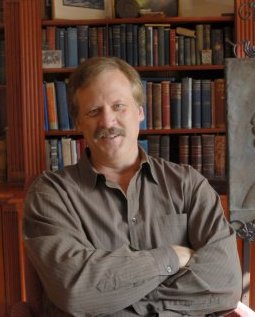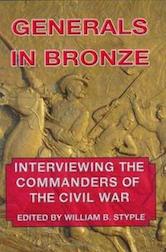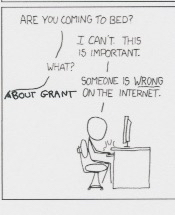Thankful For. . . .
Thanksgiving may now be behind for this year, but our season of gratitude is not. For the next few days, ECW would like to spend time sharing with you some stories about the people who’ve made an impact on us as historians. It’s a way for us to not only express our gratitude, but it’s also a way for us to peel the curtain back a little bit and give you a look behind the scenes at some of the unsung heroes of the Civil War community.

I often think of the story ECW co-founder Kris White told me of an early visit he made, back as a young boy more than thirty years ago, to the old Gettysburg Battlefield Visitor Center. The main lobby, dimly lit, was usually crammed with visitors funneling through to the museum, the Electric Map, and a whole building full of curiosities and cool stuff. Tucked off to the side of the lobby, author William B. Styple sat behind a small table stacked high with his books. Young Kris went over to see what was up.

Bill is a workhorse author who has been a staple at Gettysburg for decades (“Styple as staple”?). He has put together some great books, including great collections of Civil War journalism in his “Writing and Fighting” series. His Generals in Bronze collected in print for the first time the interviews artist James Kelly did with more than forty Civil War generals as he prepared to depict them in sculpture. It is a treasure-trove of insights! Bill has published a library of books worth checking out, which he has tirelessly promoted.
Bill took the time to chat with Kris and encourage Kris’s interest in the Civil War. That first, chance encounter made a huge impact on Kris and did much to set him on his current path as one of the most recognized public historians working in the field today. It was, in retrospect, a “wow” moment.

I think, too, of one of the many dedicated volunteers at Grant Cottage, Bill Underhill, whose work actually inspired this series for me. I met Bill a decade ago while working on my book Grant’s Last Battle. You might not recognize Bill’s name among the pantheon of well-known Grant scholars like Brooks Simpson or John Marszalek or public historians like Ben Kemp (also of the Cottage!) or Nick Sacco. Bill is one of those excellent folks at the Cottage who, for years, have keep the site going day by day. But what impressed me about Bill, in particular, was that for years, he would send an email almost every day that shared some tidbit he found online about Ulysses S. Grant. I don’t know how many of us were on Bill’s list, but he kept us looped in on all sorts of cool and thought-provoking stuff. He was, truly, a keeper of the flame.
Bill finally gave up his daily emails in 2016. “It’s becoming more difficult to find worthwhile articles about Grant,” he wrote. “The internet is filled with articles, stories, etc. about him specifically or mention him in some way. Most of them are not worth posting as they are grossly inaccurate, redundant or just not worth reading.” When he had time, Bill would reach out to authors privately to offer gentle corrections.
Bill hasn’t given up the ghost entirely: I’ll still, on occasion, get an email from him with some fascinating bit of info or a wonderful historical photo, for which I’m grateful.
Those are the sorts of folks we hope to call your attention to over the course of the next week or two. The Civil War world is full of such generous, dedicated people who carry on their work, often quietly, doing what they can to help keep the story of our great history alive. By calling attention to a few of their stories, we hope to remind you of all those other great folks out there who also deserve our—and your—thanks.
Let me finish this introduction by sharing one of my all-time favorite TED talks, which focuses on the idea of gratitude. The talk features the work of filmmaker Louie Schwartzberg, who makes slow-motion nature movies. In this video, he talks about the power gratitude has for enriching our lives. It’s well worth watching.
The first time I saw the Electric Map I was in the eighth grade in 1960. I saw it again in the mid 80’s, and once more in the mid 90’s. I thought it gave a pretty good idea of what happened and where it happened. I went two years ago and it was gone. What a shame.